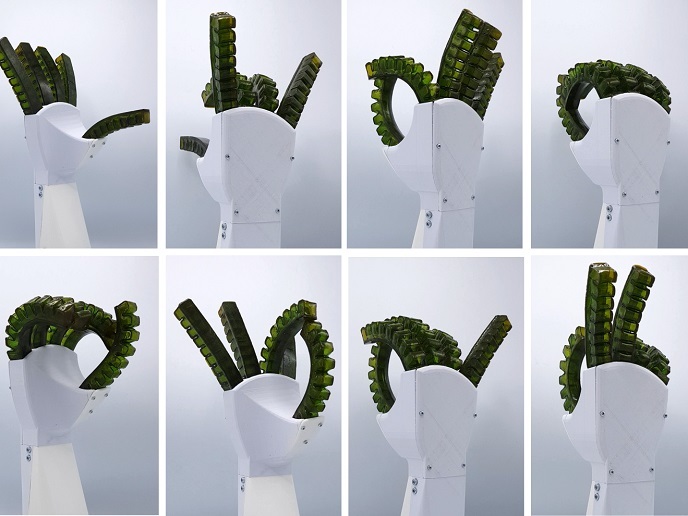Transforming soft robotics with pain-feeling, self-healing and sustainable robots
When humans and animals are injured such as from a cut, they are able to heal over time. However, for broken robots, this often means replacement parts are needed. This not only impacts on the environment, but these parts can be costly. The EU-funded SHERO(opens in new window) project had a radical vision of developing fully autonomous self healing soft robotic devices. This was achieved by integrating engineered functional materials, smart sensing and active actuation and control capabilities into soft robots. “Our ambitious goal was to develop complete robotic systems(opens in new window) that are able to feel pain, react intelligently to relieve the pain, take the necessary measures to heal the damage and to restore all functions, perform a rehabilitation, and finally, return to action,” explains Bram Vanderborght, project coordinator from Vrije Universiteit Brussel and imec, a leading innovation hub in nanoelectronics and digital technologies. SHERO used an unprecedented integrated approach consisting of several essential technology breakthrough innovations on the value chain.
The potential of soft robots
“The need for robots that can safely interact with humans and delicate objects led to the fast emergence of the ‘soft robotics’ field in both academia and industries,” notes Vanderborght. Soft robots are constructed from flexible materials, like silicones and polyurethanes. They are used in various industries as soft grippers and manipulators that handle soft and delicate objects. The soft material used for these robots, however, is very susceptible to damage, strongly limiting their lifetime. “Additionally, most soft materials have a low recycling potential,” adds Vanderborght.
Making the vision a reality
One solution for soft robots is the use of self-healing polymers. However, not all of them are suitable for use in soft robotics. Dynamic covalent bonds, like Diels–Alder (DA)-based elastomeric networks, have been deemed suitable. “In the project, we synthesised and characterised self-healing polymers DA-based networks, hydrogen bond-based networks and vitrimers(opens in new window) exchange reaction-based networks,” outlines Vanderborght. Furthermore, the synthesis and characterisation of reversible networks with additional functionality were realised using conductive particles in self-healing polymers material for developing embedded sensors and magnetic fillers in reversible networks. “To go beyond the state of art on the manufacturing level and to respond to different industrial needs, we developed dedicated processing techniques using additive manufacturing techniques, but also including moulding, casting, laser cutting and welding,” adds Vanderborght. These innovative materials and processing techniques were demonstrated in several soft robotics demonstrators, one of which was a gripper. The robotic gripper(opens in new window), composed of materials with different mechanical properties, with intelligent control was damaged under controlled conditions. Results showed that it could heal and was able to resume its original tasks.
A new kind of trust in EU products
“The main innovation of our self-healing materials is to increase reuse of the existing product by extending their service lifetime. In addition, these materials can be recycled,” highlights Vanderborght. Therefore, SHERO contributes to the EU’s circular economy action plan(opens in new window) for a cleaner and more competitive Europe. “Through the self-healing soft robots, SHERO will develop a new kind of trust in EU products, knowing that their functional performance is not depending – as till now – on human detection and repair,” concludes Vanderborght. As for next steps, the project is currently maturing their technology and investigating which other application areas beyond soft robots can benefit from it.







